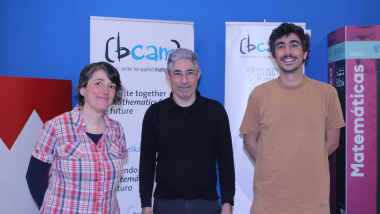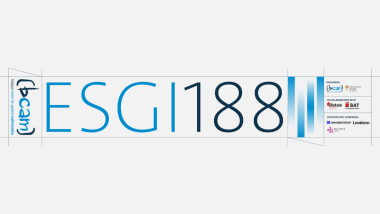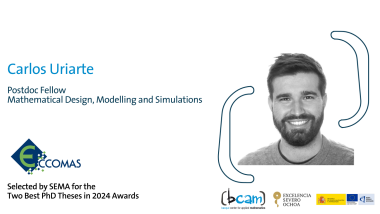Margarida Moragues: “I like the interdisciplinary nature of the project, in which mathematics, physics, engineering, and computational science are together involved”
Margarida Moragues Ginard obtained a Bachelor’s degree in Mathematics from the University of Barcelona in 2005. She holds a master’s degree in theorical mathematics, algebra and geometry, at the University Pierre et Marie Curie in 2007 and a master’s degree in Computational mathematics at the Polytechnic University of Catalonia in Barcelona in 2008.
In 2019, she joined the Basque Center for Applied Mathematics – BCAM as a postdoctoral researcher after being in Barcelona Supercomputing Center as a junior researcher and a predoctoral student.
In 2021 Margarida started working on the project of Marie Sklodowska-Curie Individual Fellowship at the Basque Center for Applied Mathematics.
We have spoken with Margarida Moragues to know about her Marie Sklodowska-Curie project that consist on the numerical simulation of aircraft engine jet noise, which is the noise generated by the turbulent jet behind aircraft engines. “Reduce these noise levels is one of the key goals for a sustainable aviation future. The numerical simulations of jet noise based on computational fluid dynamics, are an important prediction tool for both the aircraft industry and the scientific community”, she explained. The project will perform compressible flow simulations, that compute the spatial and temporal evolution of the turbulent jet, including the acoustic scales and “this is considered the most reliable approach for predicting jet noise within the area of computational aeroacoustics”, she added.
She told us that she was motivated by the social contribution that this project involves. “We are then contributing on building a healthier environment for people to live in”. From her scientific point of view, “this project represents several new challenges”. Dealing with the flow mechanisms that produce sound is something that she finds very interesting and she explained that she will work with high-order numerical methods for the space discretization of the compressible Navier-Stokes equations. “Even if these methods seem to be particularly well-suited to tackle these kinds of problems, in which small-scale features are relevant and need to be resolved, they have been for a long time reserved to simplified problems due to their complexity in understanding and implementing them”.
“I also like the interdisciplinary nature of the project, in which mathematics, physics, engineering, and computational science are together involved”, Moragues pointed.
She enjoys the international environment in which the project is developing. She is working with her supervisor from the Basque Center for Applied Mathematics, professor Spencer Sherwin, and his research group around aeronautics and compressible flows at Imperial College London, as well as her supervisor from the New Jersey Institute of Technology, professor Simone Marras. “I feel fortunate that my colleagues are very nice and human people”.
To know more about her work, we asked which duties is carrying out: “My mission is to learn on the new mathematical and physical aspects involved in the project also learn on the simulation software platform, nectar ++”. She clarified that she is in charge of applying for several high-performance computing allocations to be able to run the simulations. Furthermore, she is performing the relevant jet noise simulations as well as the posterior visualization and analysis of the results and she will also participate to different dissemination activities as writing scientific articles, presenting in conferences and workshops, etc.
Finally, Moragues explained which applications the project can have in the future. “On the one hand, the results from this project could give further insight into the complex noise generation mechanisms within turbulent jets. On the other hand,” she continued “the work done will represent an advance for the simulation of aeroacoustic jets and it will contribute to define the best-practice guidelines for jet noise simulation using high-order spectral element methods. It will improve the open-source tool within Nektar++ for the simulation of jet noise”. Before finishing the interview, she pointed that the knowledge and tools developed within this project could support technological innovations and noise reduction strategies for aircraft engines, thereby supporting more sustainable and pleasant environments.
Related news
Zentroari buruz
Zentroari buruz
ESGI 188 (European Study Group with Industry) Bilbon izango da 2025eko maiatzaren 26tik 30era
BCAM pertsonak




